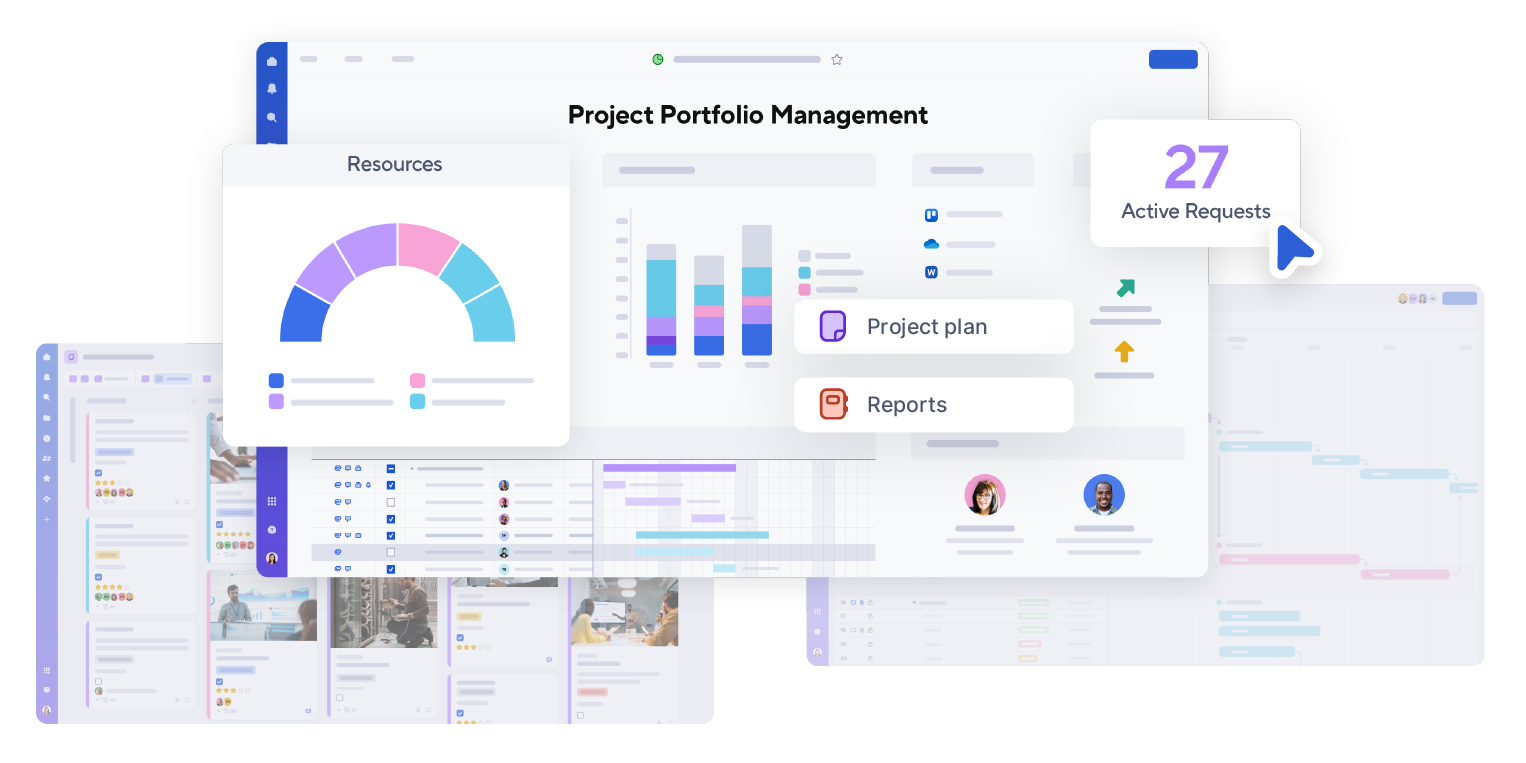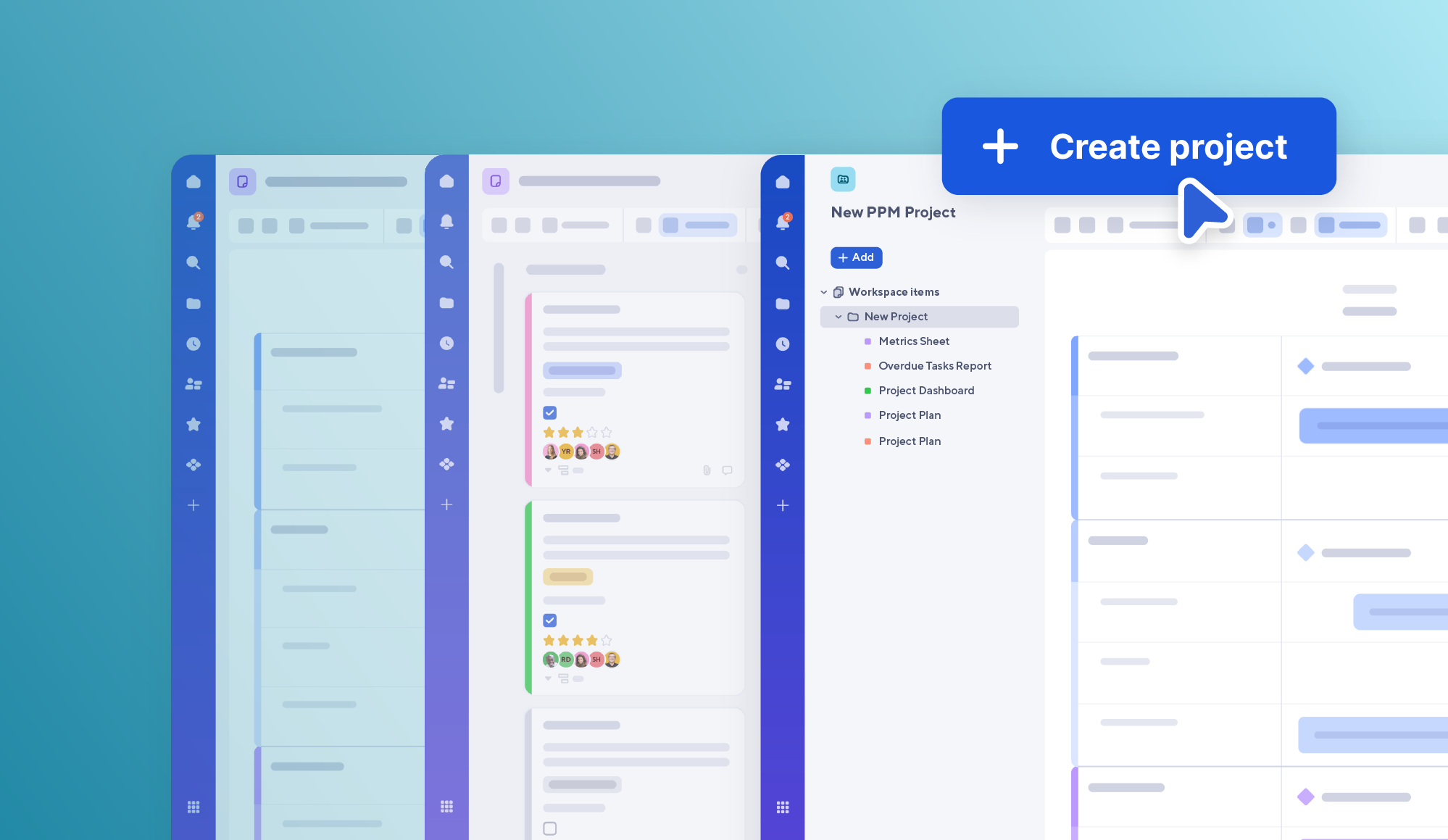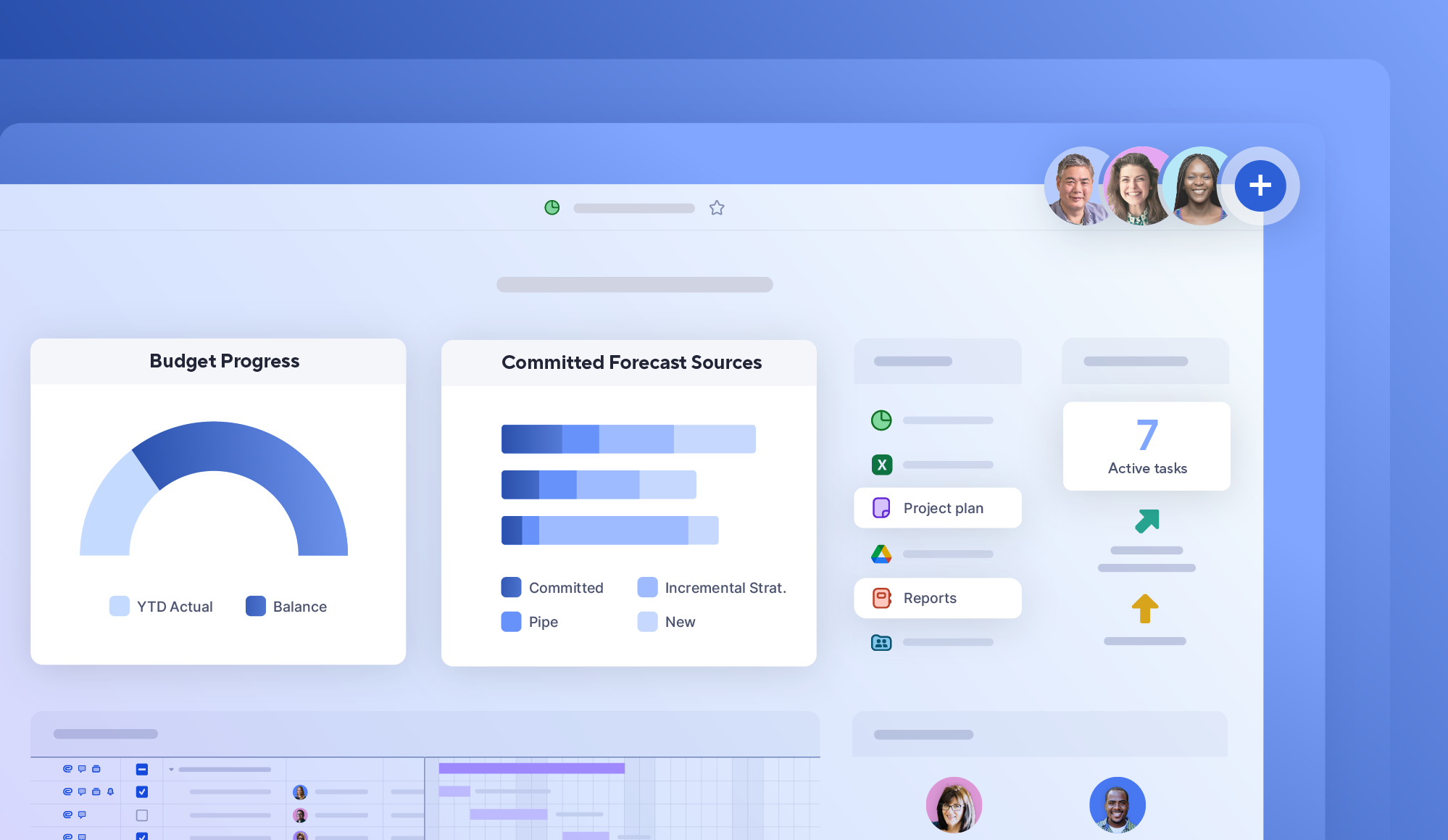
The 6 essential components of successful project and portfolio management
What is it that makes successful project and portfolio management (PPM) successful? It all starts with structure and transparency. In this guide, you’ll learn to take stock of the work already in progress, and establish clear processes for managing your resources and incoming requests.
Next, we’ll explore how to prioritize the demands on your teams to make sure you’re always focused on the right goals. We’ll also cover how streamlined project execution and effective reporting and monitoring keep your priorities on track, even when your priorities shift mid-project.
Successful PPM is more important than ever – things are moving fast, but with the right practices in place, you can create processes that not only deliver the results you’re after, but also empower your organization (and your team members) to thrive.
inventory existing work
Gain clarity and control
In a recent Smartsheet survey of PPM professionals, most say they don’t have visibility into the right information they need to anticipate disruption and pivot quickly. Taking an inventory of your existing work is essential to get an overview of your current obligations, upcoming deliverables, work status, and resource demands.
Get started with these simple tips:
Create one portal to track all projects. Choose a centralized location with access for all that can update your team and stakeholders in real time.
Determine criteria to track project details. Meet with stakeholders to determine the high-level requirements they care about most. This may include key milestones, RACI breakdowns, budgets, approvals, and more.
Learn which indicators determine success. For each project, understand the unique goals and metrics important to success and identify where each is being tracked.
Consolidate your project management process. Creating consistent processes for managing projects across your portfolio makes it easier to get a pulse on the status of all projects.
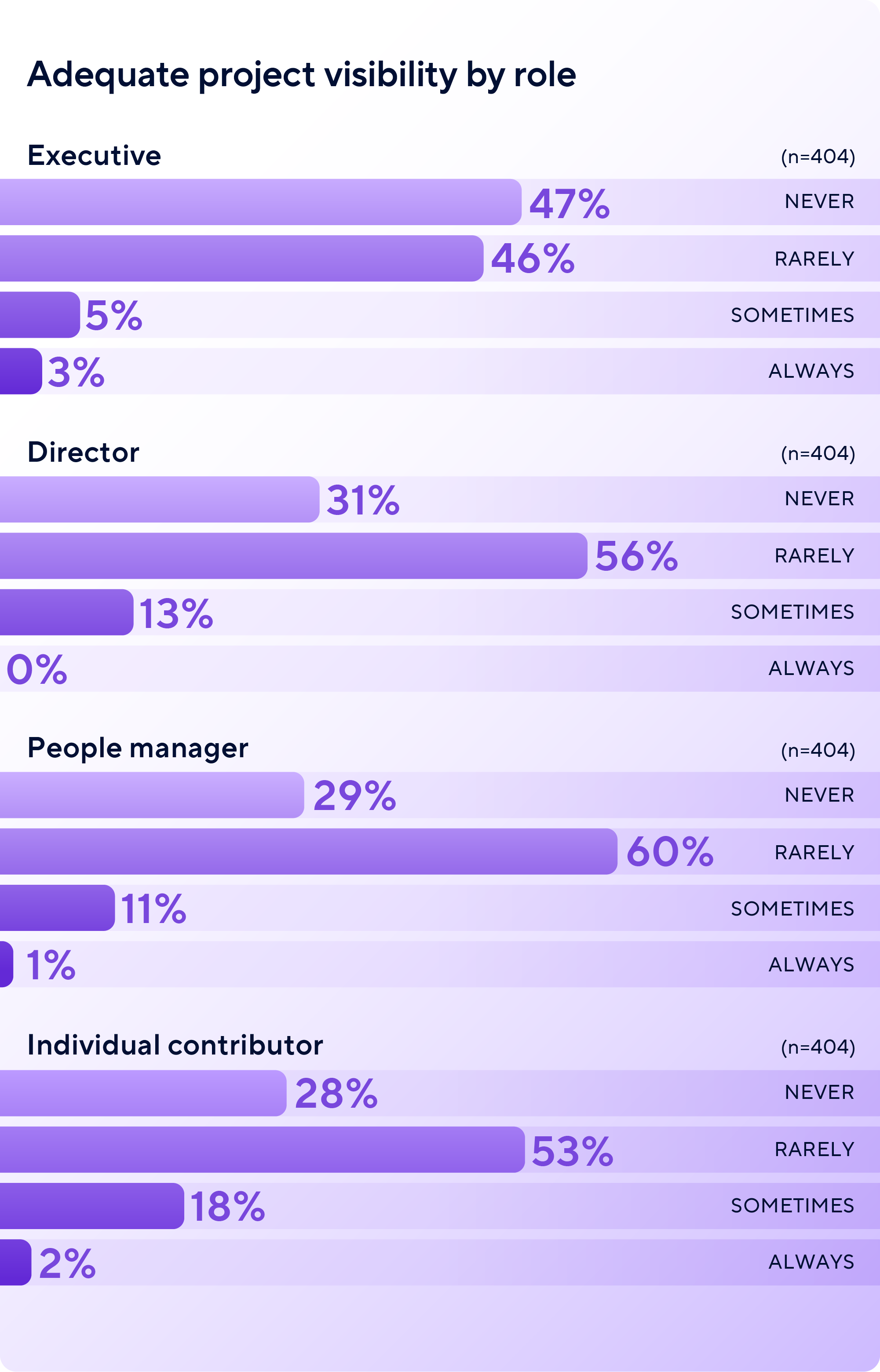
Demand management & intake
Automations for the win
Manual processes for demand management and intake are holding PPM professionals back from adapting to disruption. Your project intake and prioritization process is your first line of defense to keep your team focused on the highest priorities while avoiding overload or burnout.
Get started with these simple tips:
Create a process to submit project requests. Set up an easy intake form that teams can easily access and submit from anywhere that includes all of the information you need to review and prioritize new requests.
Set notifications to alert you automatically. This helps ensure you can stay on top of requests and route them for review in a timely manner.
Use automation to your advantage. As requests move through your process, keep business owners informed with automated alerts to effectively communicate their status.

Evaluation & prioritization
A strategic approach to project selection
Having a consistent, repeatable process to evaluate risks, success factors, and overall alignment to organizational goals for each potential project helps to determine which work is approved to start, stop, or continue. However, research shows that nearly a quarter of organizations don’t have a standardized process for responding to change.
Get started with these simple tips:
Learn to anticipate and mitigate risks. Calculate and take steps to reduce or prevent adverse effects for current and future project tasks.
Create in-depth project schedules. Set up a robust project timeline with tasks and dependencies broken out by project phase.
Efficiently forecast and manage resources. Identify and allocate the proper budget, talent, and technical needs for each project.
Determine what makes the project successful. Define how you will measure a project’s success based on the results you expect.
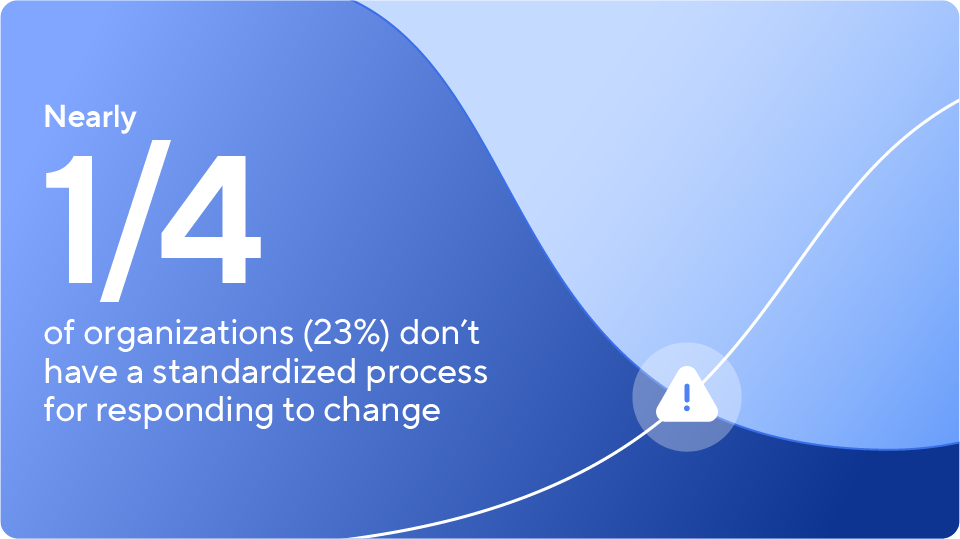
Resource management
Align skills, workloads, and tools
By ensuring you have the right people working on the right tasks, you reduce the risk of burnout and increase employee engagement and retention.
Get started with these simple tips:
Record your team’s skills and preferences. Align your people’s skills, availability, and interests with your project’s demands to make sure you’ve got the best team for the work that needs to be done.
Visualize and balance workloads and availability. Keep track of team members’ availability and workload so you can make adjustments as needed to project plans.
Integrate management and planning tools. Trying to keep multiple tools updated can impact success if something is missed in one or the other. Look for tools that integrate with one another in real time.
Project execution
Deliver projects with precision
Now that you have your intake and prioritization process dialed in, plus the right people to tackle the work, it’s time to focus on delivering projects on time and on budget.
Get started with these simple tips:
Find a flexible project management tool. Although projects within an organization often have similar phases, it’s essential you find a tool that allows you to adapt it to fit your individual project needs.
Create templates for your common workflows. Create and bundle project templates that incorporate best practices so that your teams can start on the right foot every time.
Give stakeholders access to the work. Be sure to share project plans and dashboards with all involved stakeholders to reduce the time required for status updates and sharing details.
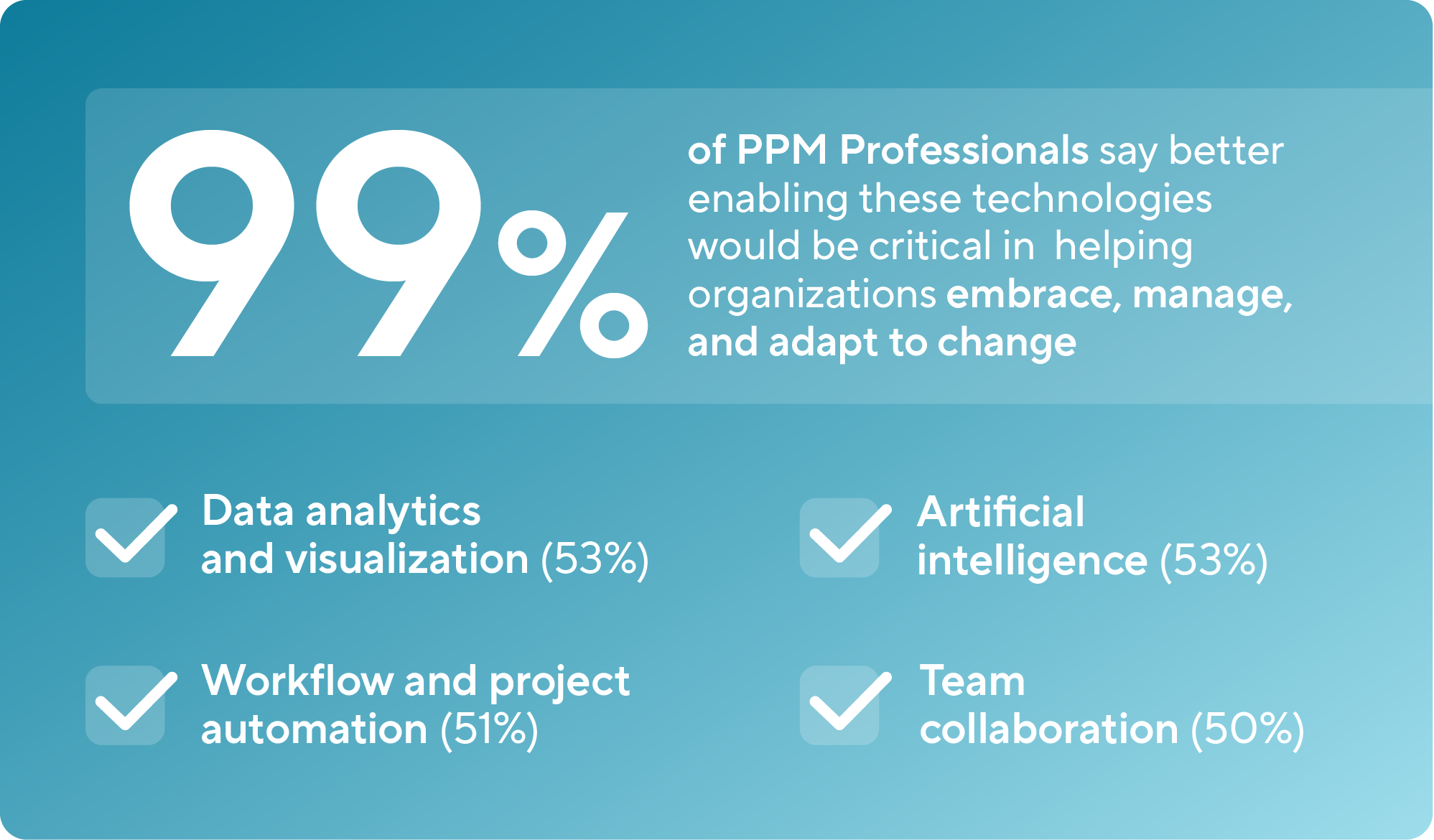
Reporting & monitoring
Stay informed, stay flexible
When managing multiple ongoing projects at different stages, you need a way to monitor and report on the progress and performance of work without hours spent on repetitive, manual status reports and meetings.
Get started with these simple tips:
Bring key metrics to the forefront. Set up automated reports from the beginning, allowing your team to spend less time responding to status and update requests and more time actually doing the work.
Serve up the information they need most. Create and share an all-up portfolio dashboard for stakeholders to quickly find the high-level health of your portfolio of projects, but still allow them to dig into the details if needed.
Connect your reporting and PPM tools. Making informed business decisions requires real-time information. Connect reporting with project plans so that status and performance roll up automatically as the work happens.


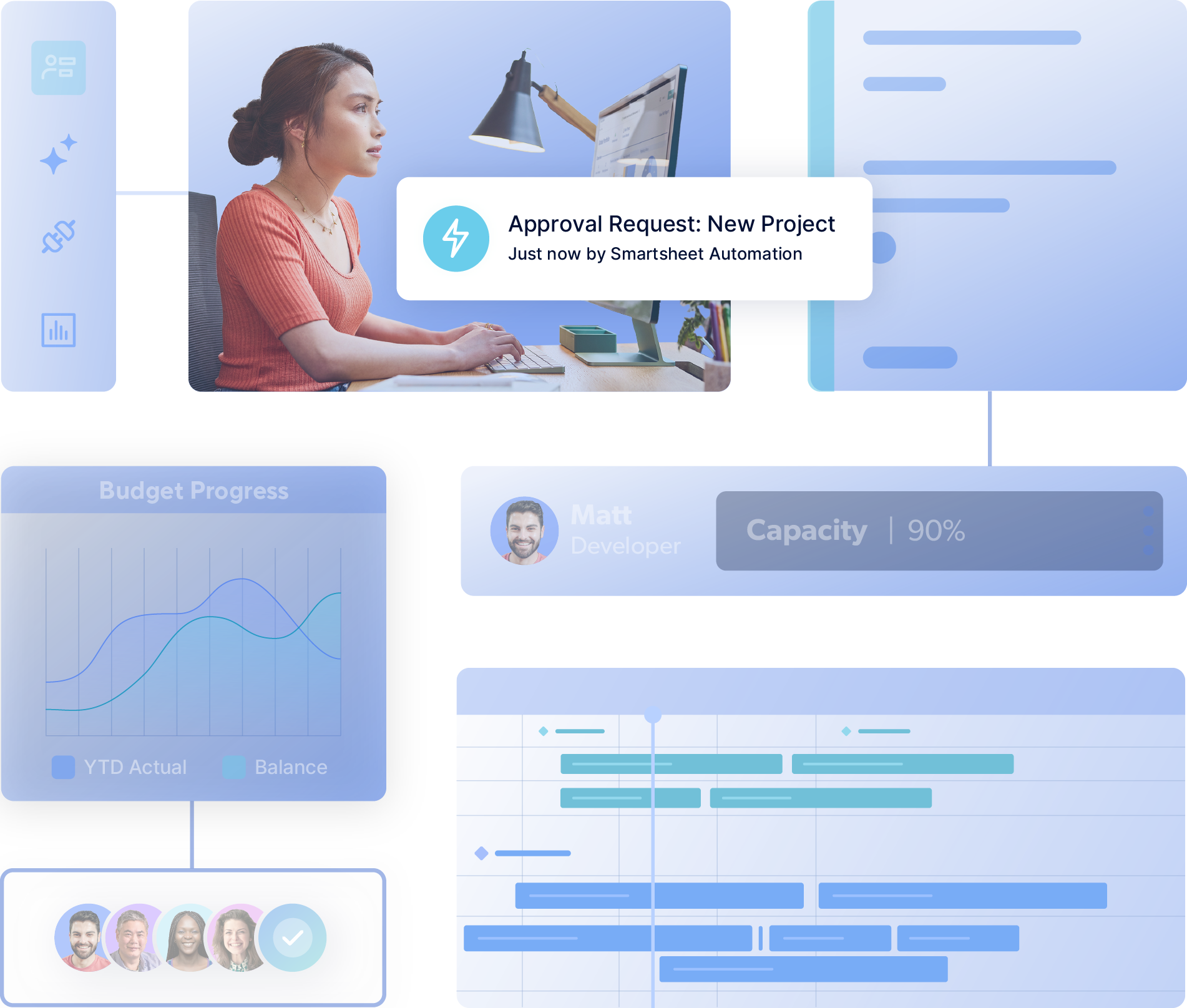
Conclusion
Turning strategy into action
Remember, the key components of successful PPM are:
- Inventorying work
- Managing demand and intake
- Effective prioritization
- Resource optimization
- Project execution
- Tracking and reporting status
By understanding these key components, you’re building a solid foundation for streamlined operations and impactful results.
Successful PPM isn’t just about reports and processes, it’s about creating clarity at all levels, aligning efforts with goals, and empowering your people to focus on the things that matter most. The steps outlined here are just the beginning, and as you refine your approach, you’ll discover how even small improvements can deliver big value.



